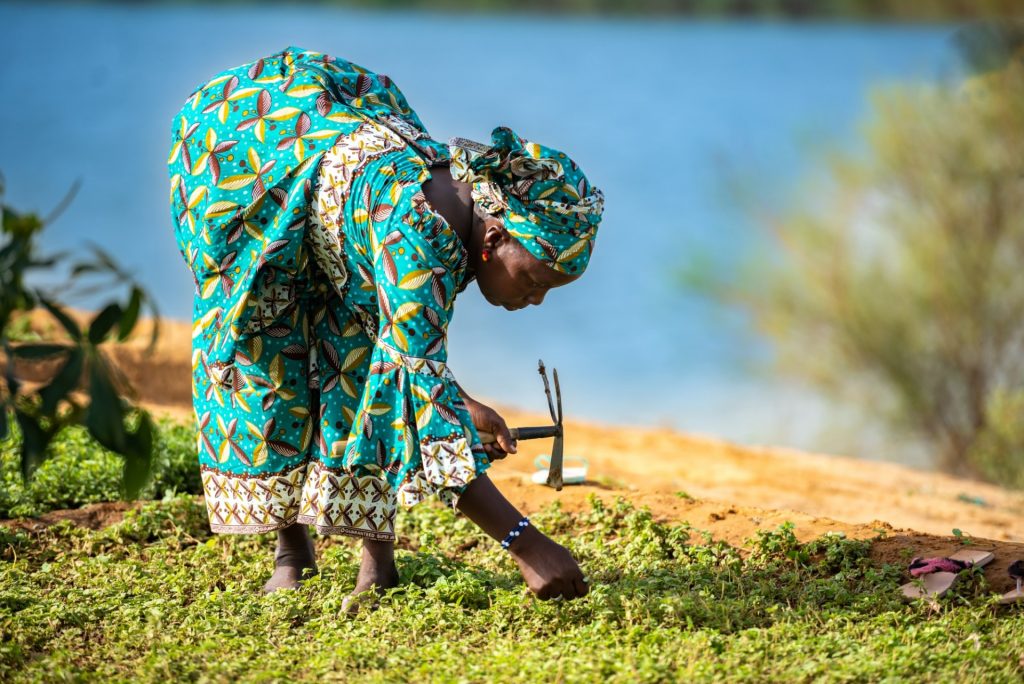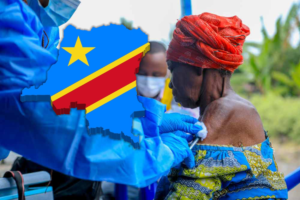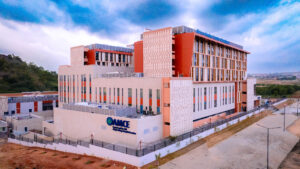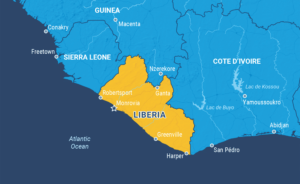Unlocking Policy Initiatives to Boost Food Security in Africa

Climate change, population growth, rising food prices, and environmental shocks significantly impact food security. Food security is defined as the consistent physical, social, and economic access to a sufficient supply of safe, nutritious food that meets individual preferences and dietary requirements, and promotes an active and healthy lifestyle. It encompasses both the availability of food and the ability of communities to access it. This article examines the state of food security in East Africa, considering factors such as conflict and climate change. It also explores efforts by organizations such as the East African Development Bank (EADB) to build resilience and support the achievement of the Sustainable Development Goals (SDGs).
Food Insecurity in Africa: By 2025, the World Bank projects that nearly 900 million people will face severe food insecurity. Vulnerable populations, particularly young children and women, will be disproportionately affected. The numbers underscore the severity of this issue, with 22.3 percent of children under the age of five experiencing stunted growth, 6.8 percent suffering from wasting, and 2.1 percent facing severe wasting. Moreover, research shows a positive correlation between food insecurity and an increased risk of anemia across various age groups.
A snapshot of food insecurity in Africa reveals regional differences. West Africa and the Sahel region experienced an overall decline in the prevalence of food insecurity, from 13.4 percent in 2022 to 10.6 percent in 2023, due to higher-than-average agricultural production. In Central and Southern Africa, improved food access and availability following successful harvests drove the reduction of food insecurity. However, over the same period, East Africa faced an escalating food crisis, with 23 percent of the analyzed population experiencing acute food insecurity. Conflict in Sudan, drought in the Horn of East Africa, widespread economic shocks, and extreme weather events contributed to these food shortages.
Conflict remains the primary driver of acute food insecurity in many countries. It has destabilized food production and disrupted global supply chains, leading to forced displacement and increased reliance on food aid. Climate change and natural disasters have also worsened food insecurity. Additionally, economic shocks, inflation, and mounting public debt have undermined access to agricultural inputs, making food availability and affordability an increasing concern for low-income families. About 40 percent of African countries experienced moderate to high food prices in 2021, a significant increase compared to only 13 percent in 2019. In particular, East African countries experienced abnormally high food prices during this period. This crisis worsened in 2022 due to disruptions in food value chains caused by spillover effects of the war in Ukraine.
Achieving the SDGs, particularly “Zero Hunger,” requires investment in efficient, inclusive, and sustainable agri-food systems. However, insufficient public investment in agriculture and food security remains a persistent challenge. Global public investment in agriculture has declined relative to its contribution to global output. The Food and Agriculture Organization’s Agriculture Orientation Index (AOI), which measures public investment in agriculture, dropped from 0.53 in 2019 to 0.48 in 2020 and 0.43 in 2021 worldwide.
Finance and Technology: The EADB is committed to addressing hunger and poverty to meet the 2030 Agenda and create a sustainable, food-secure future for East Africa. The Bank supports programs that “enhance agricultural productivity, conserve soil fertility, reduce post-harvest losses, improve nutritional values, and ensure market access for agricultural products.”
Part of the EADB’s mandate relates to agricultural finance, which plays a significant role in the socio-economic development of African countries. Agricultural finance is a catalyst for strengthening agricultural businesses, enhancing productivity, and supporting technology development. The EADB’s Rural Finance Enhancement Programme (RFEP) focuses on the agricultural sector in Uganda, where 84 percent of the population resides in rural areas and 72 percent is engaged in agriculture. Funded by an €8 million loan from KfW, a Frankfurt-based development bank, RFEP on-lends the funds to small- and medium-sized enterprises (SMEs) in rural Uganda to bolster agricultural financial services across the value chain. This support is critical as private sector credit growth has declined. RFEP loans have been distributed across various sectors, including agriculture, trade, transport, and education. Similarly, the EADB’s SME Programme provides funds for agriculture and agricultural value chains in Kenya, Tanzania, and Rwanda. Through this program, funds are provided to micro-, small-, and medium-sized enterprises (MSMEs) in rural communities through digital and other platforms.
Additionally, farm financing reduces regional economic disparities and narrows wealth gaps among farms. It serves as a lever with dual linkages to economic development, influencing both micro and macro levels of the economy. Access to financing allows farmers to invest in better seeds, fertilizers, equipment, and technology, leading to increased productivity and a positive multiplier effect. Appropriate investments in rural infrastructure, including road networks, agro-processing plants, storage facilities, and transport services, are crucial for maximizing the impact of public investment. These investments should prioritize agricultural research, extension services, and technology development. East African nations should continue to invest strategically in establishing agricultural and food-related industries, especially downstream, to diversify the variety of food available.
Technology is also critical to catalyzing agricultural production and transforming communities in East Africa, which currently rely on traditional techniques and subsistence farming. However, limited financial resources often prevent these communities from adopting new technologies. Agricultural finance bridges this gap by creating the necessary infrastructure and support for farmers to embrace innovative solutions. Investments in farm assets and infrastructure lead to increased productivity, boost farm incomes, and improve the living standards of rural communities. Importantly, increased productivity can be achieved through both increased funding for essential inputs and strategic investments in high-risk, high-reward technologies, such as newly developed, high-potential seeds.
Trade and Subsidies: The African Union (AU) plays a pivotal role in addressing food insecurity across the continent. Its primary strategies include the formulation and implementation of broad agricultural policies, such as the Comprehensive Africa Agriculture Development Programme (CAADP), and the implementation of the African Continental Free Trade Area (AfCFTA).
CAADP, adopted by the AU in 2003 as part of Agenda 2063, serves as a framework to eradicate hunger and alleviate poverty through sustainable agricultural development. CAADP focuses on reducing poverty and malnutrition, fostering agricultural productivity and incomes, promoting sustainability, and strengthening resilience to climate change.Under CAADP, African governments committed to invest 10 percent of their national budgets in agriculture and rural development. Since its inception, eight African countries have exceeded this target while most have made significant progress toward achieving it.
Regional integration, a cornerstone of Agenda 2063, has the potential to boost trade within and between African nations. AfCFTA serves as a continental framework for trade and commerce, facilitating the free movement of goods and services throughout Africa. AfCFTA reduces trade barriers and promotes value-added trade in African service sectors. One ODI report notes that “many of the AfCFTA provisions, if adequately implemented and supplemented by other actions, could not only solve the [food] crisis, but they could also turn Africa into a powerhouse of world food production.” AfCFTA’s implementation has the potential to generate jobs and wealth for approximately 30 million people across the continent.
Agricultural subsidies provide another means to stimulate agricultural production and food security in Africa. Well-designed subsidies directed toward inputs for smallholder farmers can reduce the cost of farming, increase access to essential inputs, boost food production, and enhance improved nutrition at the national level. However, this policy option remains a topic of debate among Africa’s national policymakers due to its fiscal cost, and its success will depend on the financing capacity of implementing countries.
Collaboration: Collaboration is critical to achieving food security. The multi-stakeholder Special Agro-Industrial Processing Zone (SAPZ) Programme, launched in Nigeria in 2022, represents a significant milestone in the partnership between the Nigerian Government, participating state Governors, the private sector, smallholder farmers, and MSMEs. SAPZ is collaboratively funded by the African Development Bank (AfDB), the Islamic Development Bank, the International Fund for Agricultural Development, and the Nigerian government.
The SAPZ initiative aims to empower 100,000 direct beneficiaries with the skills and resources necessary to participate in large agro-industrial value chains. Its key objectives include enhancing agricultural productivity, promoting agro-industrialization, infrastructure development, attracting investments, and stimulating economic growth. The initiative also supports gender equality by ensuring equal access to resources.
By pooling resources, expertise, and efforts, SAPZ members collaborate toward a common goal of enhancing food security, fostering economic development, and promoting social inclusion. SAPZ models the optimal coordination between governments, NGOs, and financiers while centering the needs of its beneficiaries and prioritizing long-term sustainability.
The widespread prevalence of food insecurity, coupled with issues like malnutrition and other health and climate crises, demands immediate and targeted action across the globe. Within the African region, the EADB, AU, and AfDB have emerged as crucial players in mitigating these challenges. Their role is to empower farmers through the strategic provision of development finance, support, and advisory services, in line with the 2030 Agenda. Through coordinated efforts, Africa can achieve sustainable food security and enhance the lives of communities within the continent and beyond.






